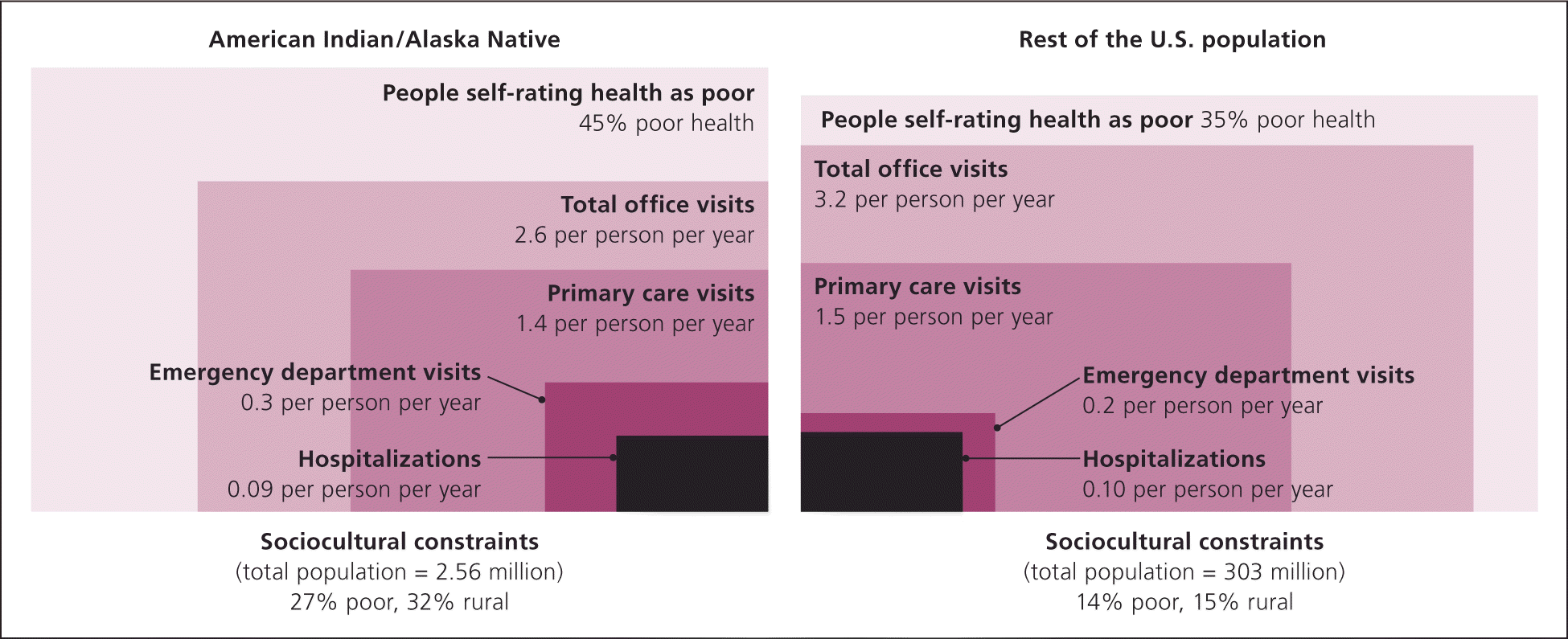
Am Fam Physician. 2014;89(3):217-218
Author disclosure: No relevant financial affiliations.
Disparities in health and access to health care continue to persist among the American Indian/Alaska Native population, despite federal efforts to call attention to and address these disparities.1 Policy makers should direct resources to ensure that this population has sufficient access to primary care services and motivation to use those services, which are important factors in the struggle to reduce disparities.
For historical reasons, the American Indian/Alaska Native population is particularly at risk of health and health care disparities. We examined national data to understand how American Indians/Alaska Natives use the health care system. To visualize the comparison, we employed an “ecology of health care” model, which uses relative box size to indicate differences between populations.2,3 We compared American Indians/Alaska Natives with the remaining U.S. population on self-rated poorer health (see accompanying figure).

This analysis reveals, as expected, the American Indian/Alaska Native population to be significantly more rural and impoverished than the rest of the U.S. population. In addition, American Indians/Alaska Natives rate their health as poorer, yet they access the health care system less often than the rest of the U.S. population. When they do access the health care system, they more often enter through emergency departments. Despite the poorer health of American Indians/Alaska Natives, the rates of primary care visits and hospitalizations are similar to the rest of the U.S. population.
Health disparities in the American Indian/ Alaska Native population remain a significant problem, despite efforts to address them.4,5 An association between stagnant funding and stagnant mortality rates for American Indians/Alaska Natives has been reported.6 Given that American Indians/ Alaska Natives live within significantly sicker and poorer ecologies, allocation of scarce resources needs to disproportionately provide for their health. Additionally, this finding raises the question of why these populations are low utilizers of the health care system—a question that requires further investigation. Suggested explanations for the disparity include poor access because of rurality and poverty, closer proximity of emergency departments compared with Indian Health Service or tribal health clinics, and poor cultural competence of health care professionals. Policy makers and planners serving this population should continue to invest in primary care solutions to enhance American Indian/Alaska Native access to care and to help reduce their disparities in health and health care.
